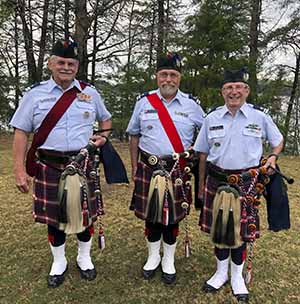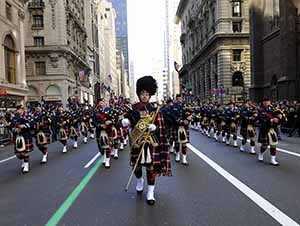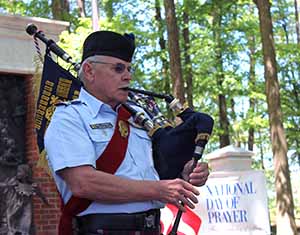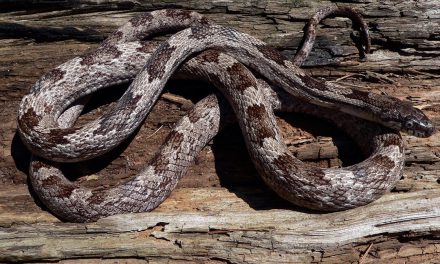
Pipe Major ML Loudermilk, Pipe Sergeant John Quinn and Pipe Corporal Robert Miller performed at the University Yacht Club Opening Day in 2023.
Don’t blow off the traditions of bagpipers; Scotland’s national instrument has been around since the 1500s and are more versatile than people give them credit for.
First used as instruments of war, bagpipes as we know them today replaced trumpets as a rallying call on the battlefield. Although the origin of bagpipes is somewhat up for debate – did the Egyptians, the Irish or the Scots invent them? – there’s no denying that bagpipes produce one of the most distinctive musical sounds in the world.
Times have changed, and the bagpipe carries a much broader recognition. People think of bagpipers as marching units in parades, performers at funerals or military ceremonies and at various celebrations of Scottish history, such as the Highland Games held each fall at Stone Mountain.
However, in the United States the only currently active pipe band affiliated with the military is the US Coast Guard Pipe Band.
For the past 15 years, Lake Lanier’s ML Loudermilk, who lives in Hoschton, has served as the Pipe Major in the US Coast Guard Pipe Band, a national organization with nearly 140 musical members, either bagpipers or drummers.
“While we are not formally attached to the Coast Guard, we have been officially recognized as an associate organization and are allowed to wear the insignia and use the name, and all our members are either active duty, retired or reserve members of the Coast Guard, combat veterans or belong to the US Coast Guard Auxiliary. Membership is open to men and women.”
The band, founded in 2002, is formed around individuals and local detachments who may fulfill nearby requests for bagpipers. However for major events, Loudermilk and the group’s Drum Major Kevin Conquest, in Gilbert, Arizona, will put out a call to assemble as many musicians as available.
“Although our members are literally spread out across the country, we do a pretty good job of making our presence known through an average of more than 70 events each year,” said Loudermilk, who joined the organization in 2004 when he and his wife Sally lived in Anchorage, Alaska. “Most people have no idea that the US Coast Guard Pipe Band plays at some pretty large military and public gatherings every year.”
Some of the most significant performances have included The USS Arizona Memorial and the Repatriation of the USS Oklahoma Pearl Harbor sailors in Honolulu, HI, the New York St. Patrick’s Day Parade, the annual Grand Haven, Michigan, Coast Guard Festival and numerous 9/11 memorials and remembrance ceremonies.

Pipe Band performs at the St. Patrick’s Day Parade in New York City.
He says that about 95 percent of performances are solo, when a member is asked to play “Amazing Grace” at a retirement, funeral or memorial service.
The Atlanta detachment, based within USCG Auxiliary/Flotilla 2-9, is comprised of 12 pipers and one drummer. Depending on the type of request, Loudermilk works with the available players to muster a group.
“We’re requested at Blessings of the Fleet, Changes of Command for boating and military groups, such as University Yacht Club, the US Coast Guard Auxiliary and America’s Boating Club Atlanta, which usually requires five players or less,” Loudermilk said. “When we’re requested at a parade, such as Mardi Gras or a military holiday, we send out the call to all our members across the country and whoever can come, does.”
Because the group is so far-reaching geographically, rehearsals are few when a large group plays a concert or marches in a parade.
“Typically band members have only several hours to rehearse at most when we all come together,” he said. “We’ll go over logistics of that particular event – from which tunes we’ll play in which order, run-throughs of each and how we will handle changes between songs.”
“It’s the same way when we do large performances,” he said. “And it is so amazing how we all come together and everything just works.”
For new members or a new piece of music, a recording, video, CD or DVD will be sent to everyone to practice on their own.
Loudermilk learned to play 35 years ago and readily admits that bagpipes are not the easiest instruments to play.

Pipe Major ML Loudermilk performs during a National Day of Prayer service.
“You’ve got to have physical stamina, air control and lung capacity,” he said. “Add to that proper posture and the special techniques required to master the instrument. Typically bagpipes are played for extended periods of time and that can be exhausting unless you stay in shape.
The original bagpipe’s bags were made from the skins of animals, such as sheep or calves, designed to hold air. Now, they are often made of Gortex. The flow is regulated by the musician’s applying pressure on the bag with his left arm, and the air passes three pipes, called drones, coming over the player’s left shoulder. The bagpiper inserts the blow stick into his mouth to continue to fill the bag. The musical notes are created on the chanter, the lower pipe with fingerholes to produce different notes, played by the hands.
The band’s repertoire includes about 20 tunes, ranging from traditional Scottish folk songs such as “The Green Hills of Tyrol,” “The Rowan Tree” and “Brown-Haired Maiden” to patriotic music including “America the Beautiful” and “God Bless America.”
“Most of our audiences recognize ‘The Coast Guard Hymn,’ ‘Scotland the Brave’ and ‘Semper Paratus,’” he said. “But far and away our most requested tune is ‘Amazing Grace.’ With the mournful, haunting sound of the pipes, there’s hardly a dry eye in the house when we play it.”
For more information about the USCG Pipe Band, visit www.uscgpipeband.org.
Photos: courtesy of USCG Public Affairs and UYC photo by Ted McGee






